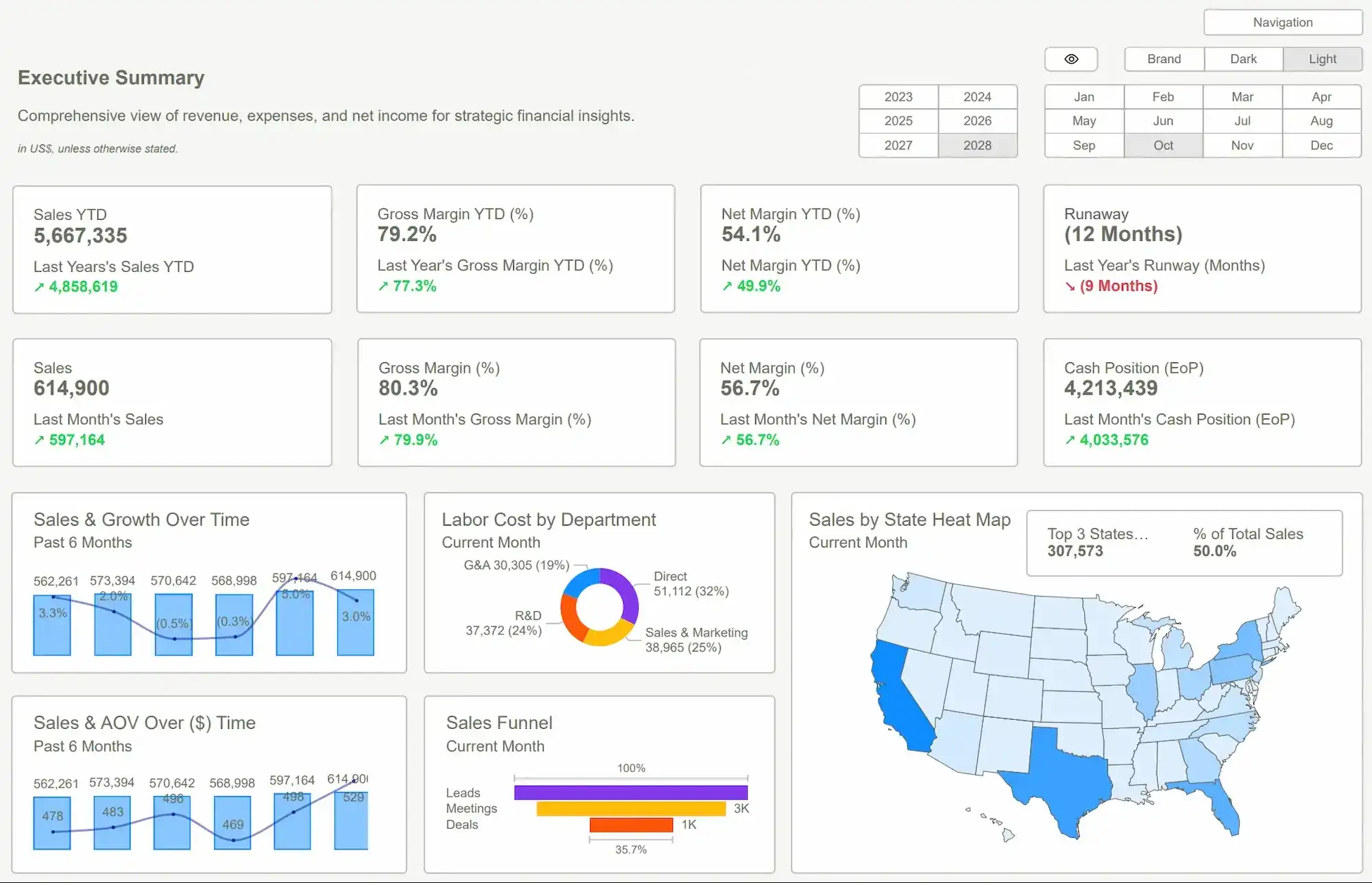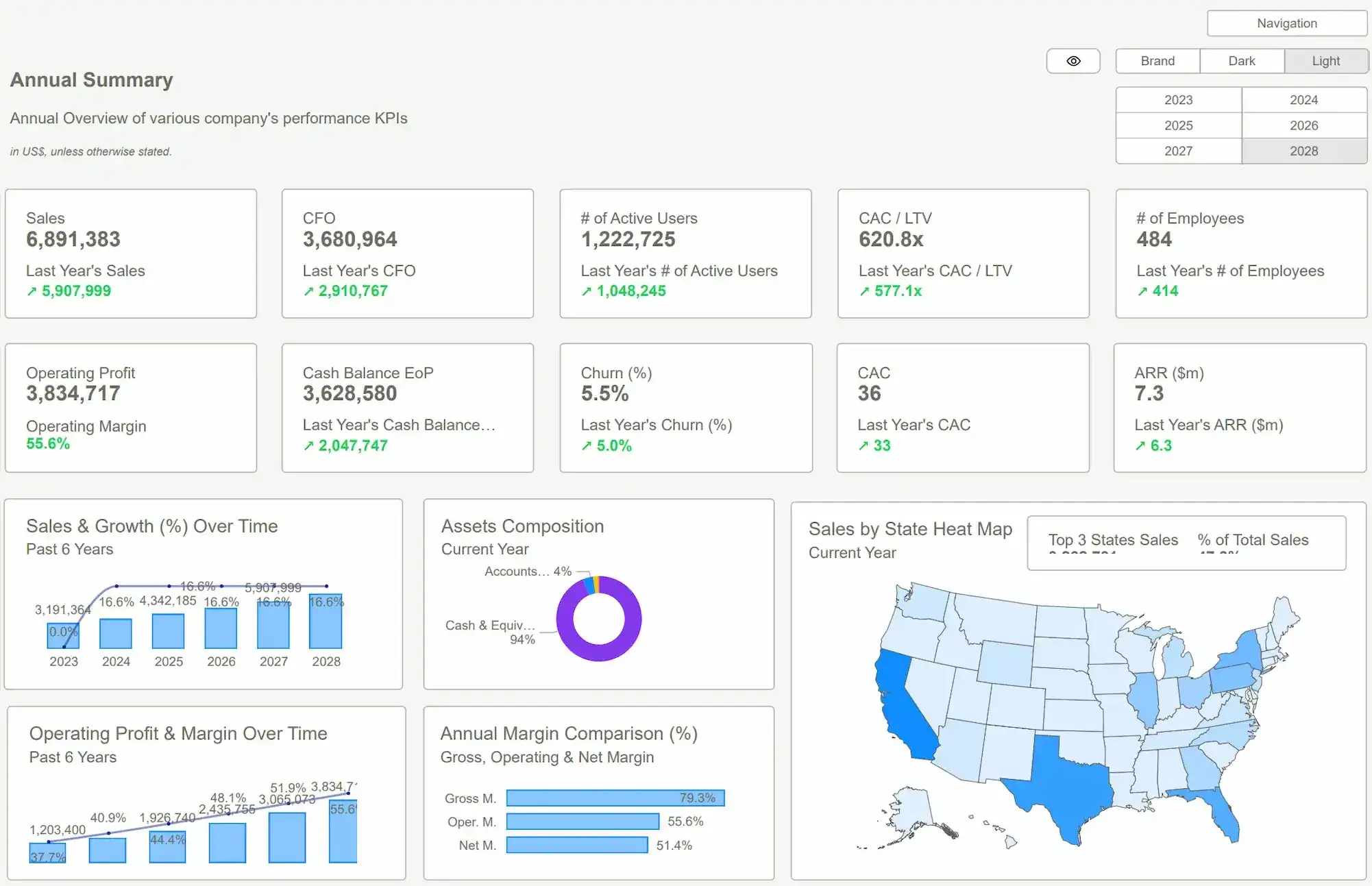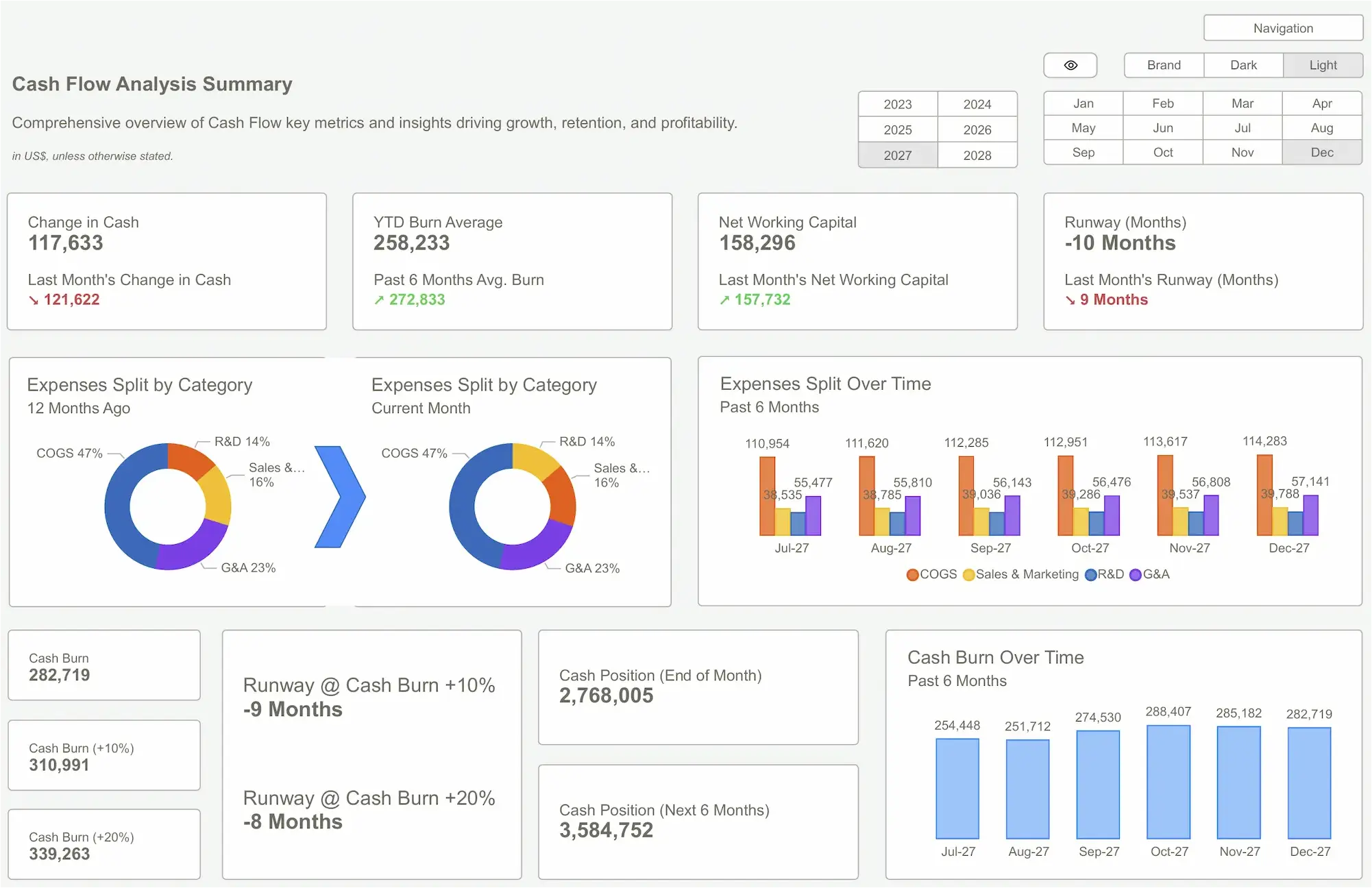Let’s be honest. The annual budget is a theatrical exercise in guesswork. You spend Q4 locked in meetings, negotiating departmental wish lists and plugging numbers into a spreadsheet based on last year’s performance plus an optimistic 10%. By February, a new competitor emerges, a key hire quits, or a marketing channel collapses. The budget, that document you fought so hard for, is now functionally useless.
The misconception is that budgeting is a necessary, albeit painful, administrative chore. A box to be ticked for the board. This is wrong.
The real goal isn't to hit an arbitrary number set six months ago. It's to build a living, breathing model of your business that gives you real-time control. This is the shift from archaic budgeting to modern Financial Planning & Analysis (FP&A). It’s the difference between navigating with a folded paper map and using a live GPS that reroutes you around traffic you can’t even see yet.
The Annual Budgeting Charade
The fundamental flaw in traditional budgeting is that it treats the business as a static entity. It’s an accounting exercise, not a strategic one. Founders and CFOs get this wrong by focusing on the output (the final budget number) instead of the inputs (the operational drivers that create the numbers).
This flawed thinking leads to predictable symptoms of a broken process:
- Political Sandbagging: Department heads intentionally underestimate revenue or overestimate costs to make their targets easier to hit. The budget becomes a tool for internal negotiation, not a search for truth.
- Instant Obsolescence: Your budget is a snapshot in time. The moment reality deviates—a supply chain disruption, a surge in customer acquisition cost (CAC), an unexpected churn event—the entire plan is invalidated.
- Reactionary Decision-Making: When you miss a target, the question is "What happened?" The analysis is a post-mortem. You’re always looking in the rearview mirror, explaining variances instead of anticipating them.
- The "File and Forget" Phenomenon: The budget gets approved, saved as a PDF, and is rarely consulted again for operational decisions. It exists for the board, not for the operators.
Fancy dashboards don't fix this. They just give you a prettier view of the same flawed data. A new fractional CFO who follows the same old process just delegates the frustration. The problem isn't the tool or the person; it's the entire model.
 FP&A
FP&AStop Forecasting Expenses, Start Modeling Levers
The antidote to the static budget is a driver-based financial model. It’s a complete reframing of how you think about your company’s finances. Instead of asking, “How much will we spend on marketing in July?” you ask, “What are the levers that drive our growth, and what are their costs?”
This is the core discipline of effective FP&A. You deconstruct your business into its fundamental components.
Flawed Thinking (Static Budget):
- “Let’s budget $1.2M for the sales team next year because that’s last year’s cost +15%.”
Effective Thinking (Driver-Based Model):
- “Our goal is $10M in new ARR. Each account executive can generate $800k in ARR. Therefore, we need 12.5 reps. The fully-loaded cost per rep is $200k. Our sales budget should be $2.5M, tied directly to our growth target.”
This simple shift changes everything. Your financial plan is no longer a list of expenses; it's a dynamic equation of your business operations.
- Revenue Drivers: Leads x Conversion Rate x Average Contract Value
- COGS Drivers: New Customers x Onboarding Hours x Cost Per Hour
- Support Cost Drivers: Total Customers x Tickets Per Customer x Cost Per Ticket
This model allows you to run scenarios, not just track variances. "What happens to our cash runway if we boost lead volume by 30% but conversion drops by 5%?" "What is the ROI of an AI tool that reduces tickets per customer by 20%?"
You stop being a scorekeeper and become a strategist.
 Before You Scale, Forensically Audit Your Assumptions
Before You Scale, Forensically Audit Your AssumptionsYour New Operating System: Control, Clarity, Confidence
When a driver-based model becomes your company’s operating system, the nature of financial conversation changes from defensive to proactive.
Before: The Monthly Budget Review (The Blame Game)
- CFO: “Sales missed the revenue target by 12%.”
- Head of Sales: “Marketing didn’t deliver enough qualified leads.”
- Head of Marketing: “The leads were fine, the sales cycle just got longer.”
- Outcome: Finger-pointing, excuses, and no clear path forward.
After: The Monthly Model Review (The Strategy Session)
- CFO: “Our model assumed a 3% lead-to-customer conversion rate, but we only hit 2.5%. Our CAC increased from $5k to $6k as a result. Let’s diagnose the bottleneck in the funnel.”
- Outcome: A focused, data-driven discussion about a specific operational lever. The team collaborates to solve the right problem.
This clarity is a superpower during moments of transformation.
- Fundraising: Instead of presenting a static spreadsheet, you walk investors through a dynamic model. When they ask, “What happens if you delay hiring engineers for two quarters?” you toggle one input and show them the impact on runway and product velocity. This demonstrates mastery and builds immense credibility.
- Scaling: You can finally connect capital to outcomes. You aren't just "adding headcount"; you're investing in specific drivers of growth with a clear, modeled ROI.
- Operational Efficiency: This is where FP&A meets Forensic Accounting. By modeling your operational drivers, you instantly spot inefficiencies. You see the hidden costs of a manual process or the outsized impact of a specific type of customer churn, allowing you to target waste with precision.
 FP&A | Cube Dev – Finance & AccountingForensic Accounting
FP&A | Cube Dev – Finance & AccountingForensic AccountingConclusion
The ritual of annual budgeting is a relic from a slower, more predictable era. For a growth-stage company in a volatile market, it’s not just boring—it’s dangerous. Flying blind is not a strategy.
The shift is from top-down financial forecasting to bottom-up operational modeling. This isn’t about semantics; it’s about control. A robust FP&A framework, built on the real drivers of your business, is the only way to gain predictive power over your future. It turns your finance function from a historical reporting service into a forward-looking strategic weapon.
Your competitors are still arguing about last quarter's numbers. You need to be modeling the next three scenarios for this quarter. The data holds the answers, but only if you ask the right questions.
Stop managing a spreadsheet. Start running your business.
When you're ready to stop guessing, we're ready to help.Get Started >
Ready to Unlock The Full Power of Clarity?
Explore our engagement options and pick the plan that fits your workflow.




